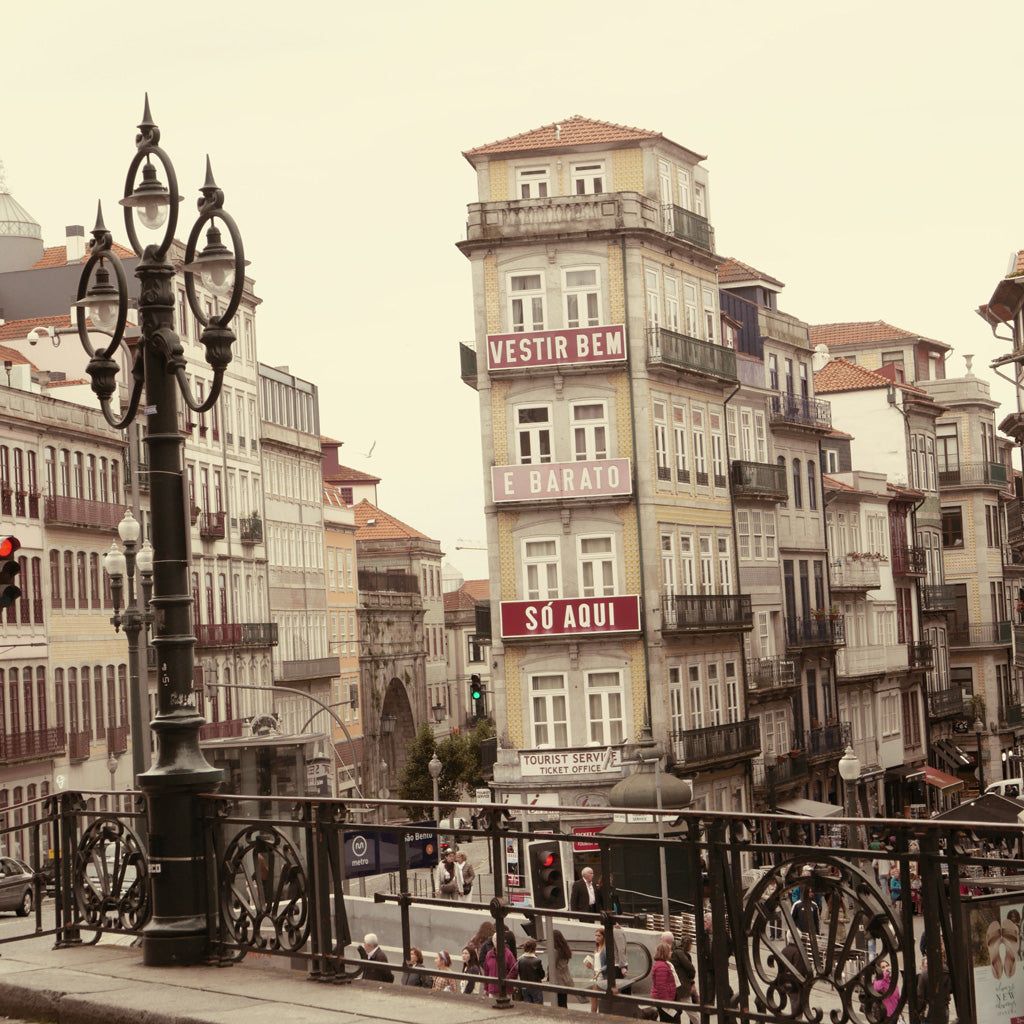
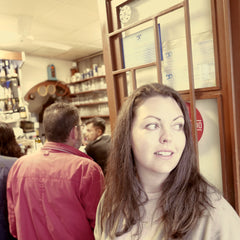 Brenna here! About once a year, Daniel and I travel across the Atlantic and pay a visit to our tailors in Portugal. While we communicate constantly through phone, email, photos, and sketches, there's nothing like sitting down face-to-face with the talented and skilled tailors, patternmakers, and sewers that make Brooklyn Tailors' clothing come to life. Taking this chance to sit down with our Portuguese collaborators to talk shop, work on new designs, and just have a friendly visit is one of our favorite parts of the job.
Brenna here! About once a year, Daniel and I travel across the Atlantic and pay a visit to our tailors in Portugal. While we communicate constantly through phone, email, photos, and sketches, there's nothing like sitting down face-to-face with the talented and skilled tailors, patternmakers, and sewers that make Brooklyn Tailors' clothing come to life. Taking this chance to sit down with our Portuguese collaborators to talk shop, work on new designs, and just have a friendly visit is one of our favorite parts of the job.
DAY 1: FREE TIME IN PORTO
One of the perks of running a business with your husband is that you can tack on a little vacation time to your business trips and Porto is one of our favorite places to do just that.
When we arrived in Porto, we luckily had a free day to wander around and check out some of the sights. Because we travel to Porto once a year to meet with our tailors, we know the city well and have our favorite spots that we like to hit up.
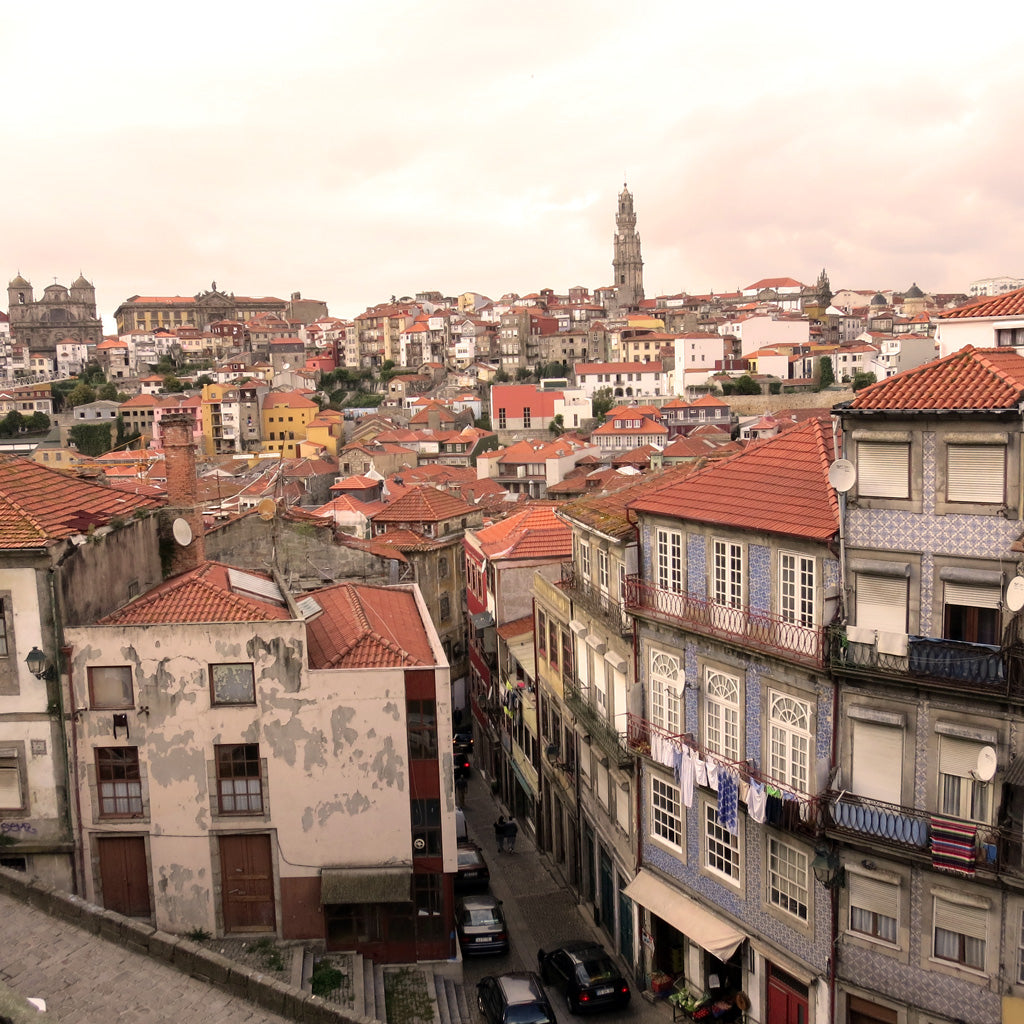
This trip we stayed at a really great Airbnb on Rua do Rosairo. We’ve stayed all over the city, but this is our favorite spot by far. This area is filled with art galleries and super affordable vintage shops. There are some fantastic restaurants (like Oficina) and it’s in the perfect central location so you can get anywhere you want easily, but it’s almost entirely free of tourists who tend to congregate down along the waterfront.
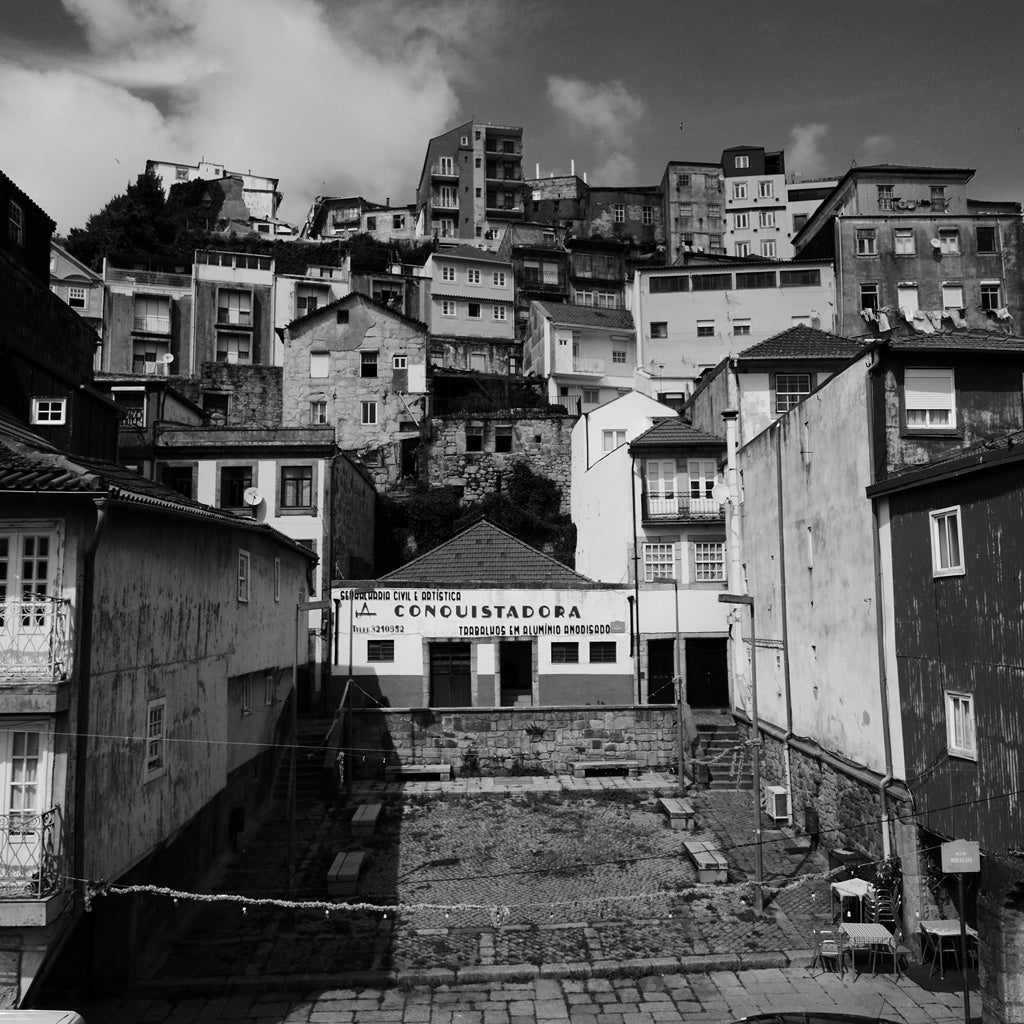
In the morning, we walked through the Cristal Palace grounds, which are free, gorgeous and overlook the river, the bridges, and the Villa Nova de Gaia side of town where are of the port wine houses are situated. We wandered through the neigborhood surrounding the historic Clérigos Tower, and the Livraria Lello Bookshop (it’s insane – Google it!) and over toward Jardim de Sao Lazaro. We had lunch at Venham Mais 5, where our chocolate cake came with a spray bottle of whiskey douse it with.
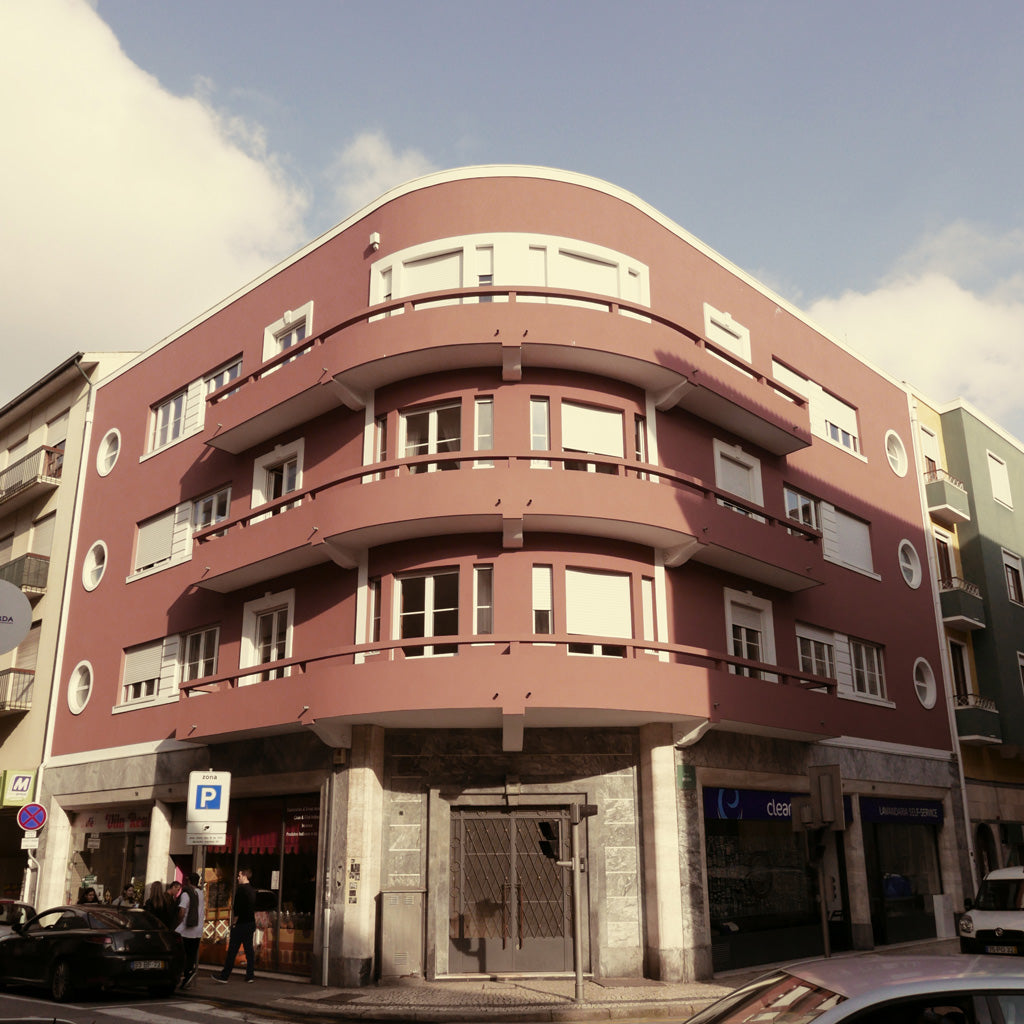
After that, we popped into Mao Esquerda, an amazing little vintage shop that specializes in Japanese clothing and accessories. Despite working in fashion, I am a terrible shopper. I always feel guilty taking the time to shop for myself – except when I’m on vacation. I left with two big bags and a smile.
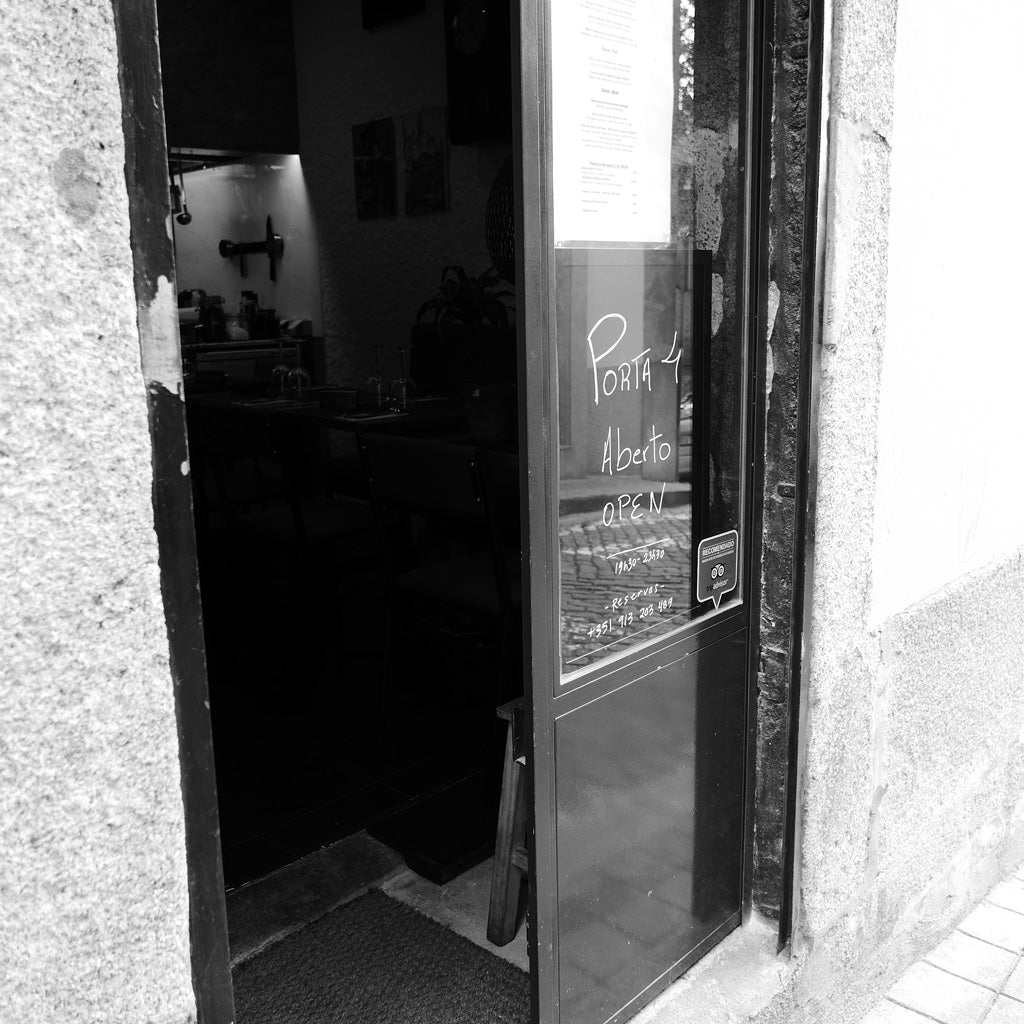

That night we had one of the best meals we’ve had in our travels in Portugal at Porta 4. This restaurant is so tiny that only 2 people can work there at one time – a chef and a front of house guy who serves as the waiter, sommelier, busboy and dishwasher. The food was insanely good, the wines were all hand-selected by the waiter/sommelier (whose father is a wine-maker) from small wine producers around Portugal, and we made some friends to cap off a great first day.

DAY TWO: VISITING OUR SHIRT MAKERS IN LOBAO, PORTUGAL
Lobao is a small residential town about 30 minutes south of Porto. Our shirt factory is family owned, so much so that it was built directly behind the owner’s home. While it’s been around for about 40 years and is quite small, the facility is new and modern and has great light. The factory is home to about 50 employees (the vast majority of which are women!). This being Portugal, they get long lunch breaks, several coffee breaks, and stop work at 5pm on the dot every day (In contrast, I am currently typing this while eating lunch at my desk back here in Brooklyn).
 Each shirt is meticulously cut by hand to ensure accuracy of fit, and proper alignment of grain and patterns. The old-fashioned way of doing things is still the best way of doing things in many cases.
Each shirt is meticulously cut by hand to ensure accuracy of fit, and proper alignment of grain and patterns. The old-fashioned way of doing things is still the best way of doing things in many cases.
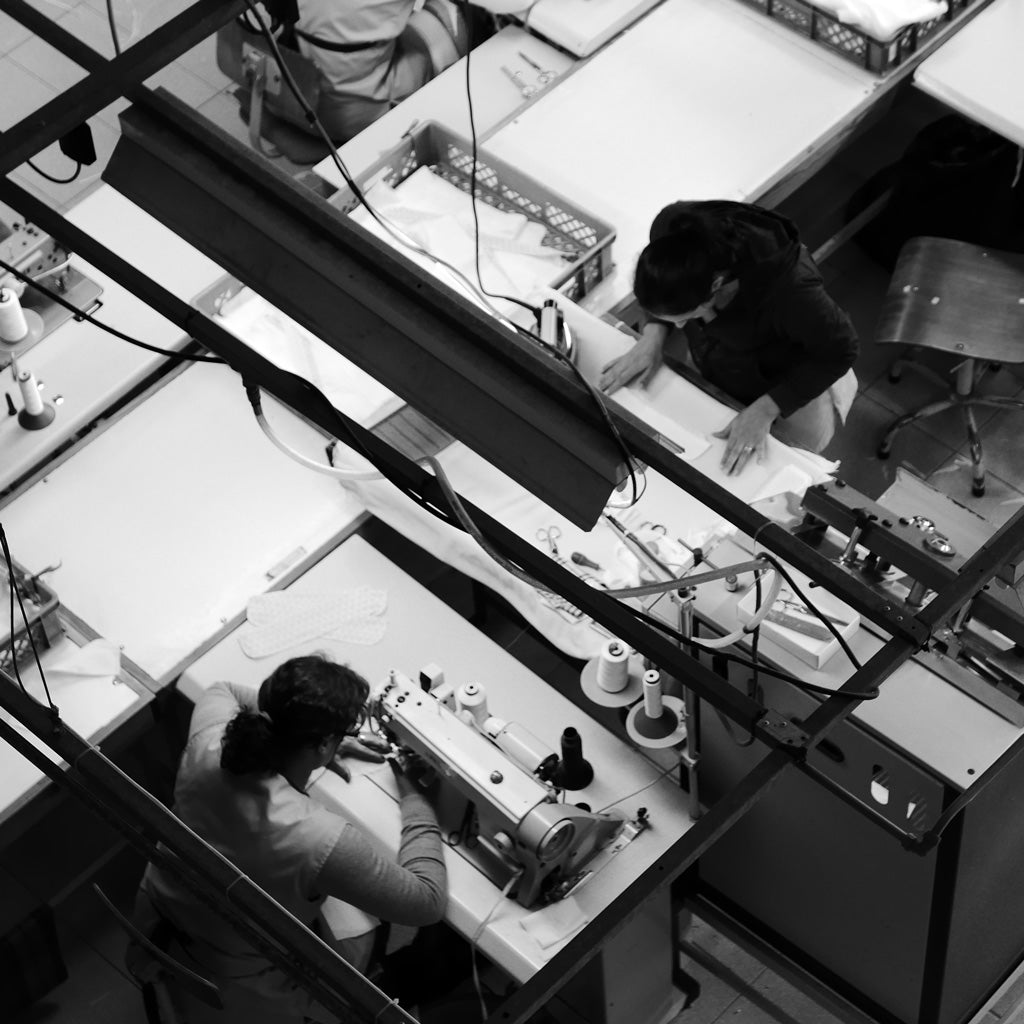
 The front placket is hand-folded and pressed.
The front placket is hand-folded and pressed.
The main reason we travel to Portugal is to meet with the factory owner, production manager, and the pattern developer to work out scheduling and go over the production of the previous season to continue to improve our quality of our product, the pricing, and the speed of production. In case you’re unfamiliar with what I do at Brooklyn Tailors, this is pretty much my jurisdiction as the head of business for the company. I also handle production, so these meetings are super critical to my job.
Once we’ve met on the previous season, we move on to the upcoming season, going over cut tickets, new styles, timelines for fabric and trim arrival, and an overall workflow of when they can start production and when it will be ready to ship to us in NYC.

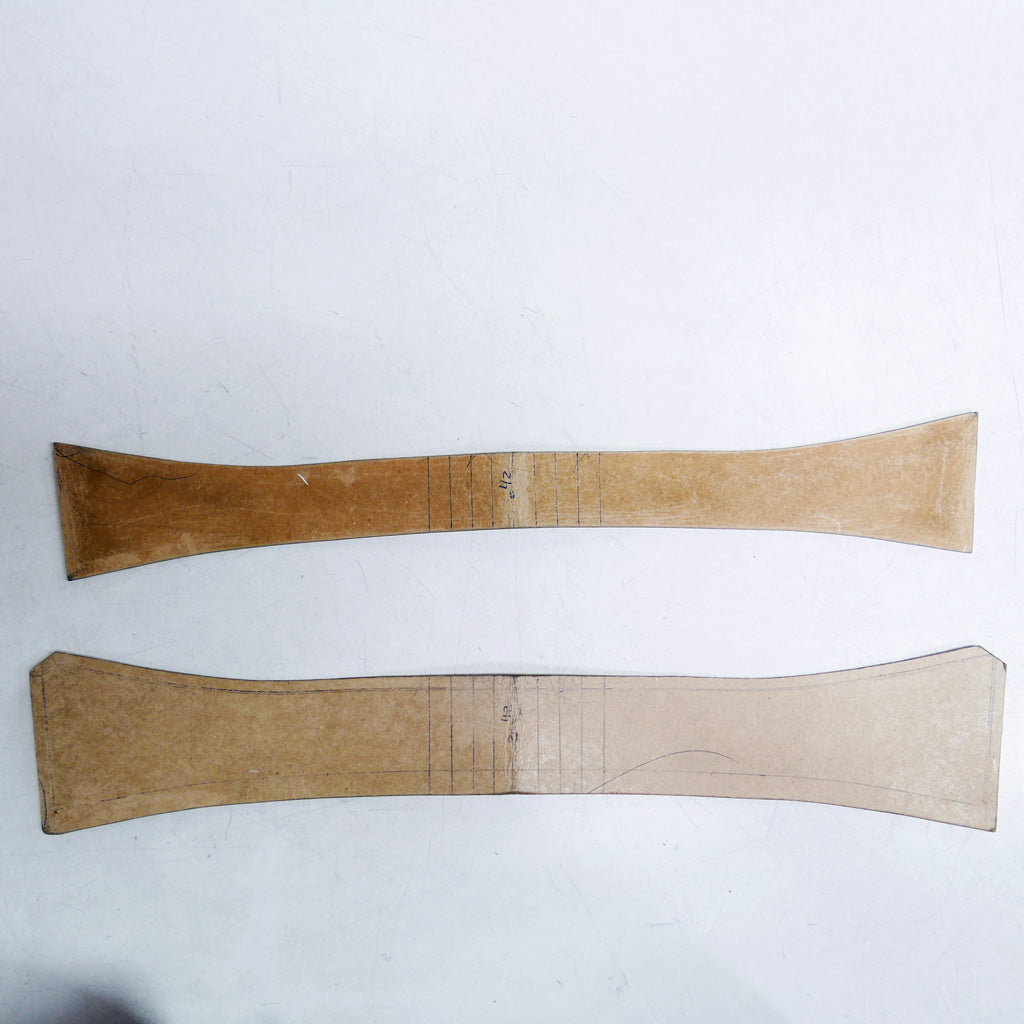 Collar patterns are cut from sturdy cardstock and kept on file in the workroom.
Collar patterns are cut from sturdy cardstock and kept on file in the workroom.
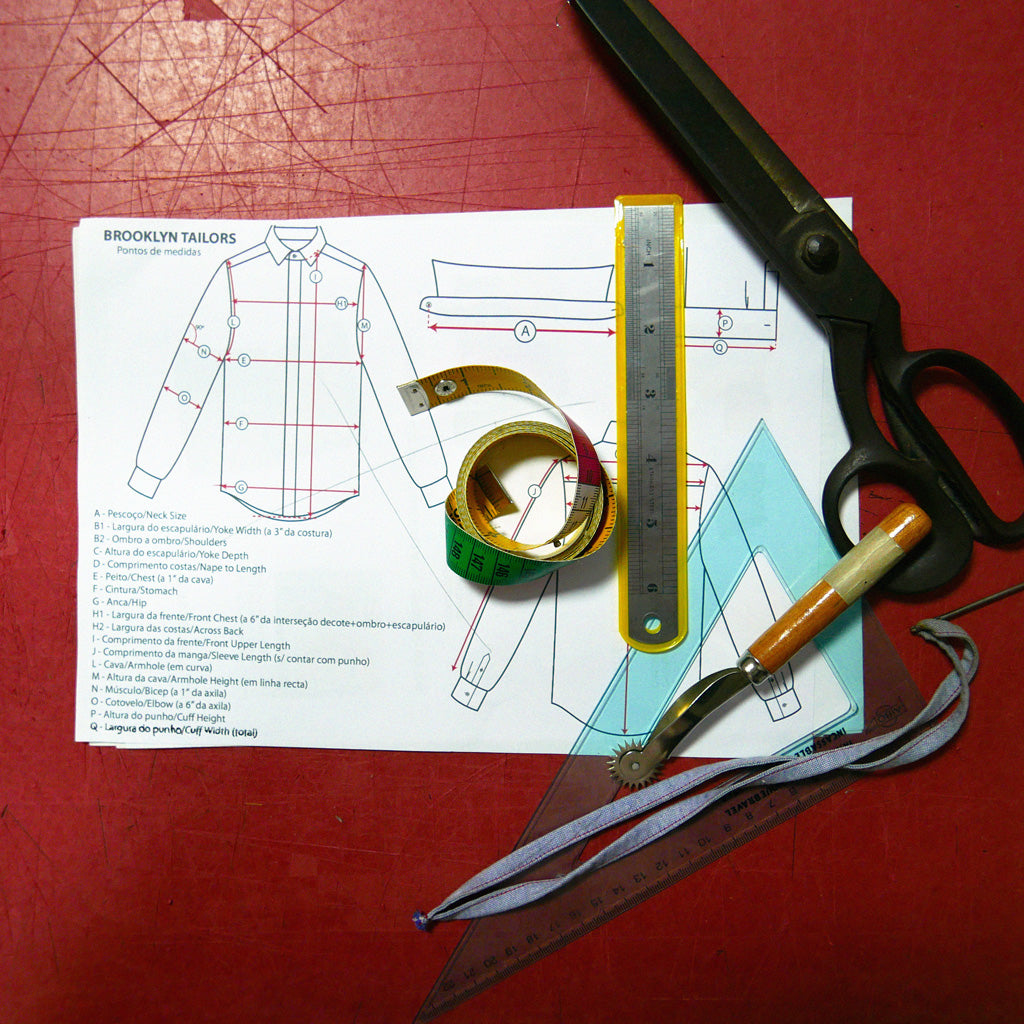
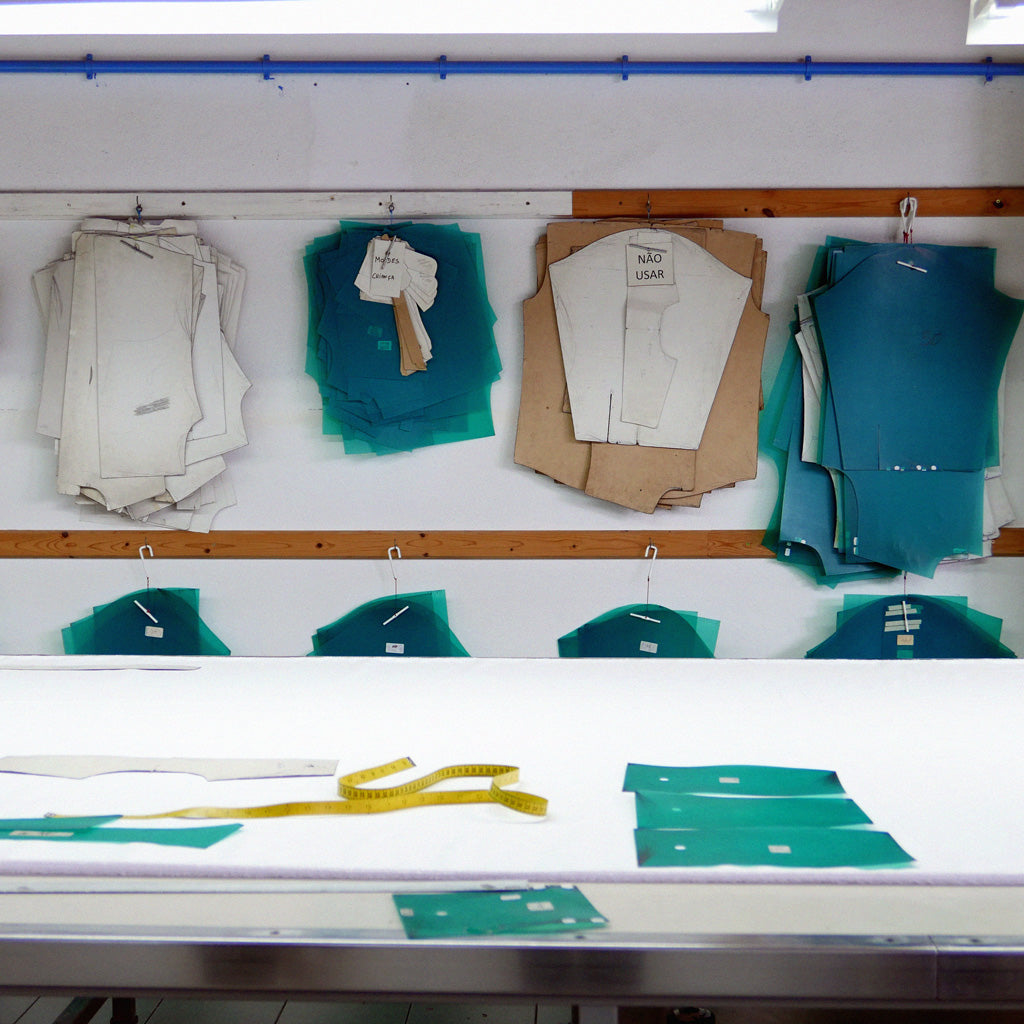 Various shirt patterns are hanging on the walls, waiting for the next order to come in.
Various shirt patterns are hanging on the walls, waiting for the next order to come in.
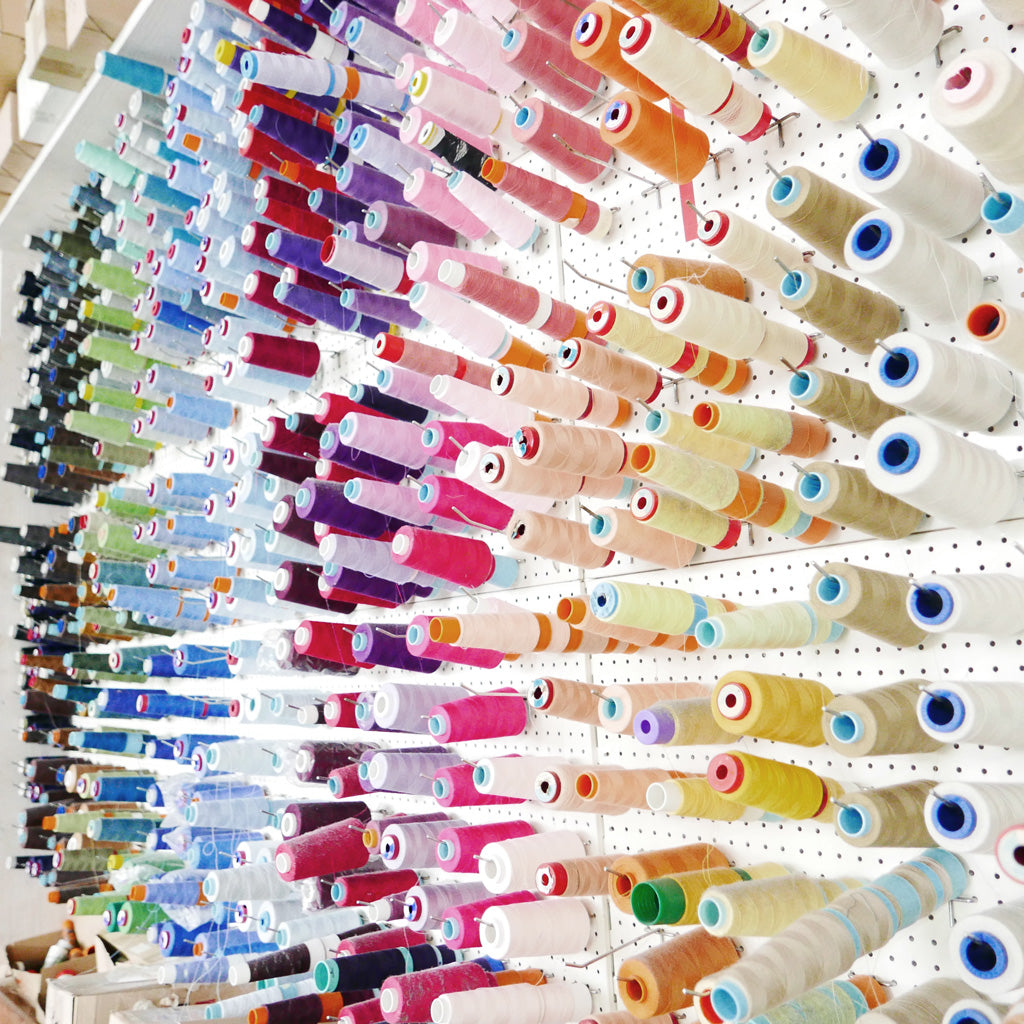
After our meetings, we spend some time on the production floor to say hello to the sewers, meet anybody new to the team, and see how our latest run of shirts was coming together on the production line. This last visit, Luis was also excited to show us some new upgrades to the workroom, most notably some wonderful skylights they had installed in the roof. Everyone was super excited about all of the natural daylight spilling into the work area.
Daniel usually takes time to meet with the pattern team to discuss style changes and new ideas depending on what he has brewing at a given time.
If time allows, occasionally the owner will drive us to a friend’s factory nearby in case there happens to be a new category of product we might be interested in breaking into. We’ve checked out factories for everything from leather goods, to t-shirts and even capes (we went to go see them because they also make jackets, but the capes were an added bonus) and everything in between. Even if we decide against that path, just touring factories around the world has become a strange hobby of ours. It's always fun and exciting for us to see talented craftspeople at work.
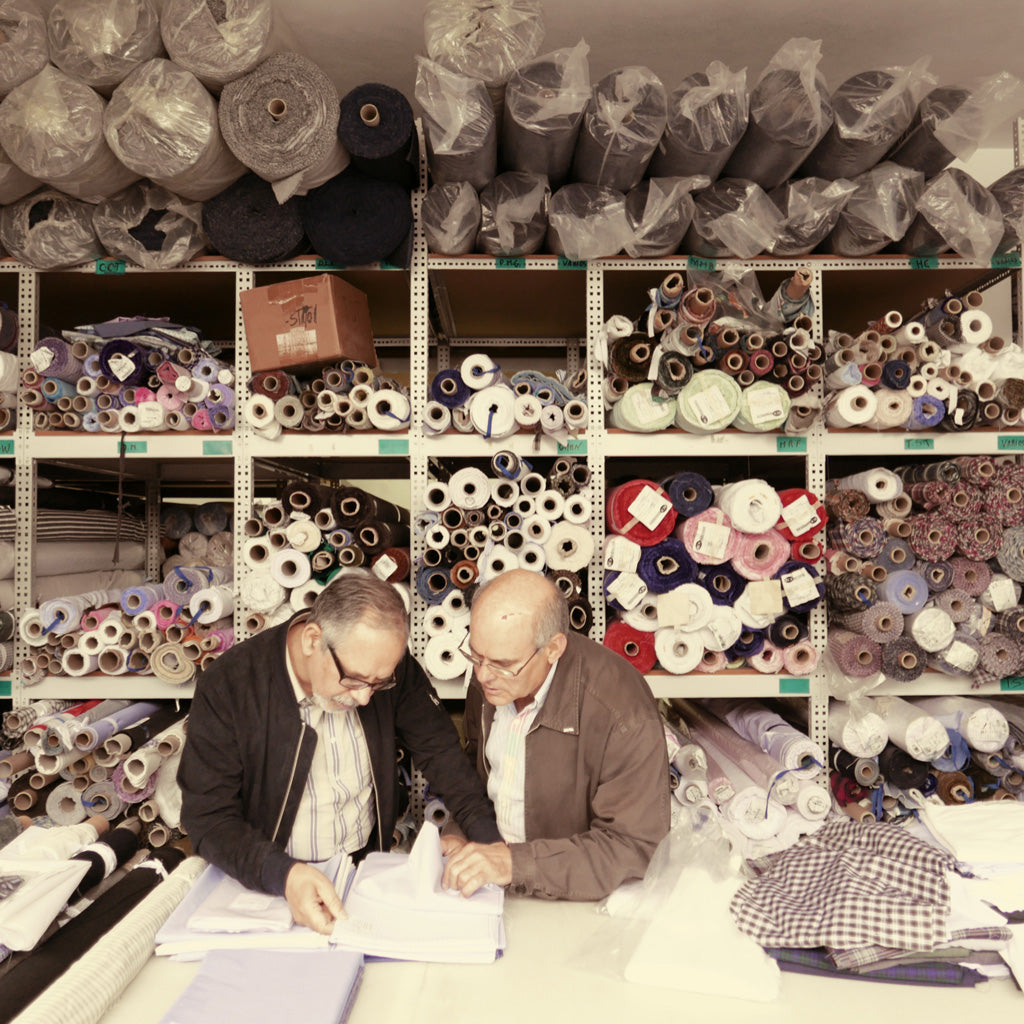 Inspecting some newly arrived fabrics from Italy.
Inspecting some newly arrived fabrics from Italy.

 Daniel standing outside the shirt workroom, with the owner Luis, and the lead pattern maker, Victor.
Daniel standing outside the shirt workroom, with the owner Luis, and the lead pattern maker, Victor.
DAY THREE & FOUR: VISITING OUR SUIT TAILORS IN PAREDES, PORTUGAL
Next stop was to meet with our suit makers in Paredes, another small town outside of the Porto area. Paredes is best known as a furniture manufacturing hub. But, tucked away in this lush, green countryside is an incredible group of tailors who make all of our custom suits.
These guys are truly amazing at what they do -- they've managed to find a perfect balance between the techniques of old-world hand craftsmanship and the benefits of modern manufacturing technology. There are so many steps involved in the making of a well-crafted suit, and our tailors have spent generations scrutinizing each of those steps and perfecting the best way to handle each of them. Many parts of the garment are still stitched by hand, while other steps in the process might incorporate much more advanced technology. For example, they recently installed state-of-the-art "suit highway" (my name for it) above-head throughout the production floor. It is a system of conveyor belts that can move the suit from one workstation to another effortlessly, without anybody needing to get up and interrupt their workflow. Once you're done with your portion of work on the jacket, you just place it on a hook, press a button, and the jacket is carried to wherever it needs to go next on the workroom floor, and lowered into place next to the other tailor who will work on it next.
 Here, the shoulder of the jacket is being stitched by hand. This old-fashioned way of working allows the most control around this curved, complicated part of the jacket.
Here, the shoulder of the jacket is being stitched by hand. This old-fashioned way of working allows the most control around this curved, complicated part of the jacket.
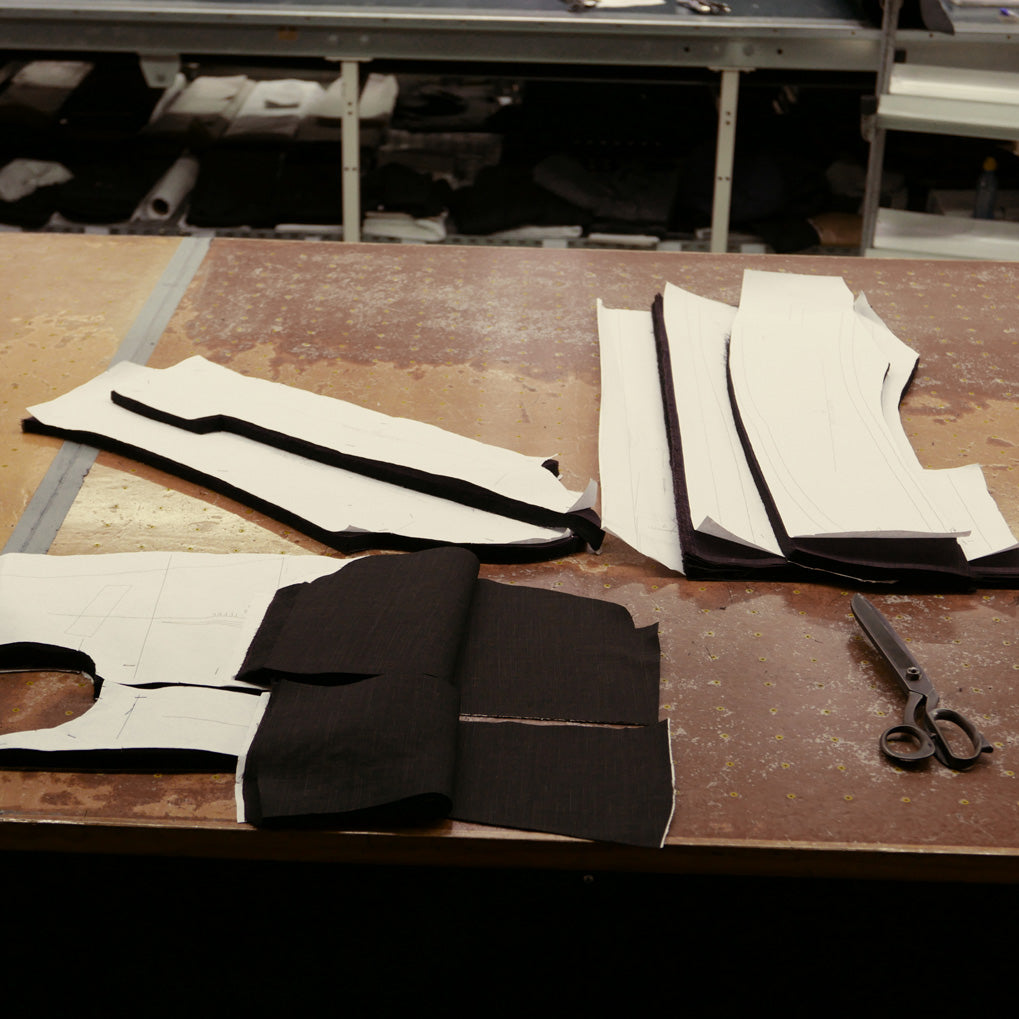 This fabric just came off the cutting table. A good suit is all about precise fit and measurements, so, the job of the cutter is one of the most important and highly skilled.
This fabric just came off the cutting table. A good suit is all about precise fit and measurements, so, the job of the cutter is one of the most important and highly skilled.
 The next step after cutting the jacket is to line up all of the components by hand, to ensure that all of the patterns match on the garment, and that the grain of the fabric is straight.
The next step after cutting the jacket is to line up all of the components by hand, to ensure that all of the patterns match on the garment, and that the grain of the fabric is straight.
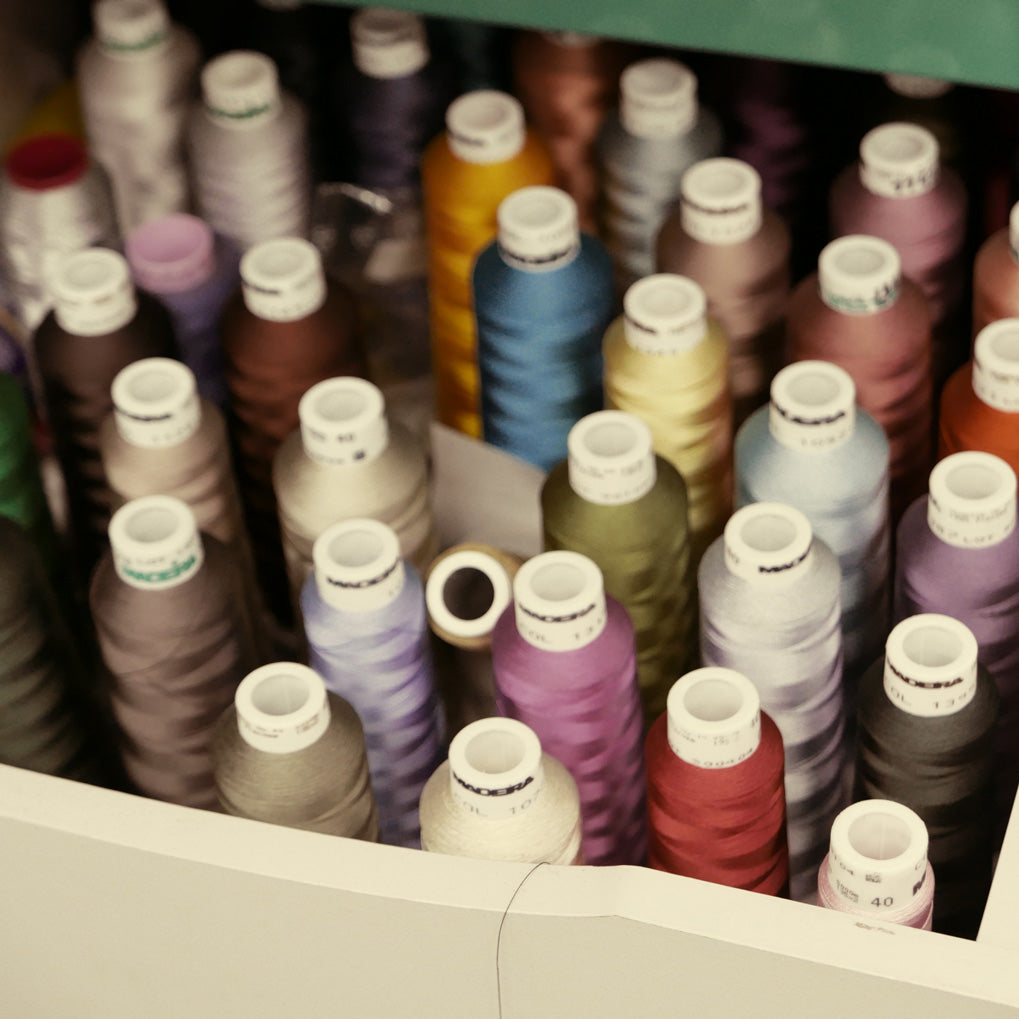
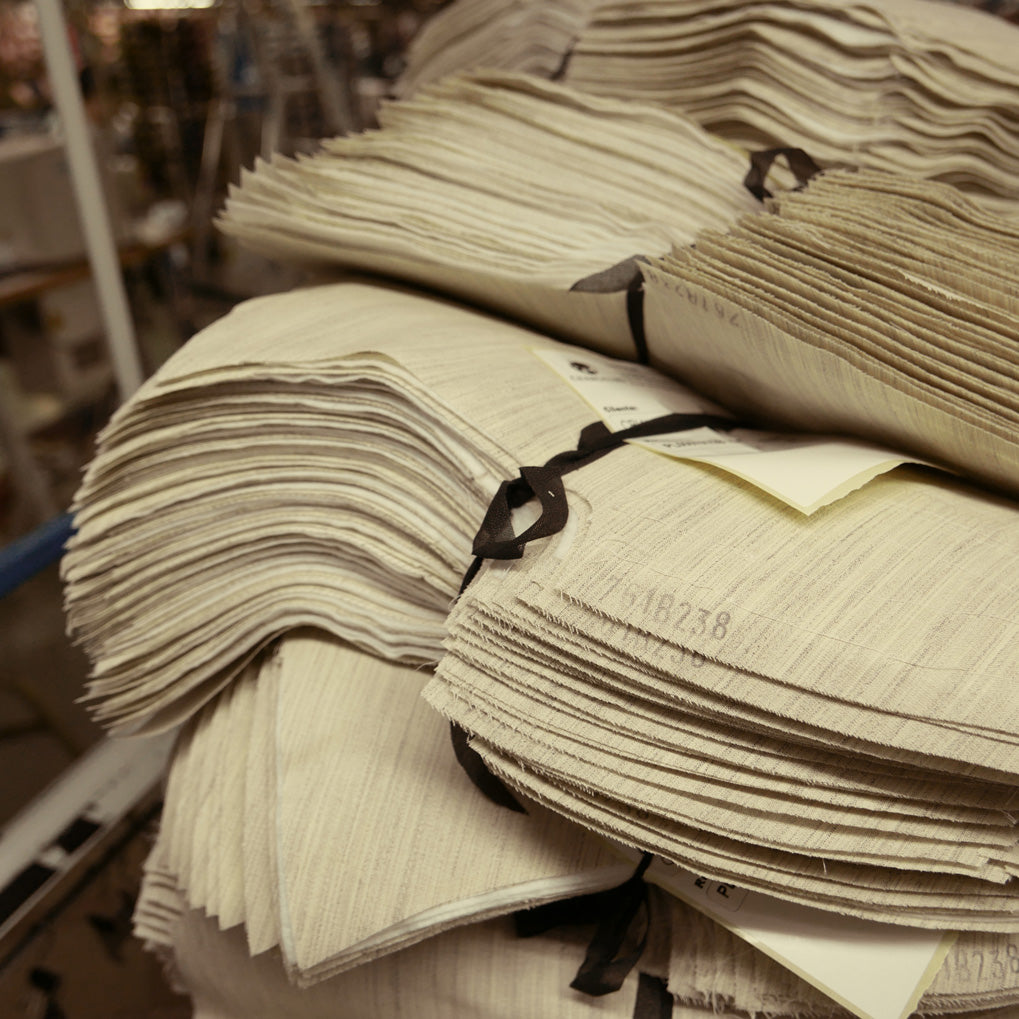 If you've been fitted for a custom suit at Brooklyn Tailors, we've probably explained that our jackets are made with a full-canvas construction, something increasingly rare these days. Here you see pieces of already cut canvas stacked up, ready to be sewn into jackets. You can think of the canvas as the skeleton of the jacket. Without it, the jacket would be lifeless and limp. The canvas gives it structure, form, and body.
If you've been fitted for a custom suit at Brooklyn Tailors, we've probably explained that our jackets are made with a full-canvas construction, something increasingly rare these days. Here you see pieces of already cut canvas stacked up, ready to be sewn into jackets. You can think of the canvas as the skeleton of the jacket. Without it, the jacket would be lifeless and limp. The canvas gives it structure, form, and body.
 Here, the canvas has been sewn into the front part of the jacket with hundreds of loose, floating pad stitches. These stitches bond the canvas to the main fabric, but they must be delicate and loose, in order to let the fabric "float" naturally. A delicate tension between the main fabric and the internal canvas is the secret and they key to a well-made jacket.
Here, the canvas has been sewn into the front part of the jacket with hundreds of loose, floating pad stitches. These stitches bond the canvas to the main fabric, but they must be delicate and loose, in order to let the fabric "float" naturally. A delicate tension between the main fabric and the internal canvas is the secret and they key to a well-made jacket.
From both a design and production perspective, custom suiting is definitely the most complex part of the Brooklyn Tailors business, so our visits to our custom suit makers are always super important. While we communicate nearly every single day over phone, email, and by mail, the chance to meet face-to-face is always extremely helpful.
Daniel spent hours with the patternmaking team to discuss some tweaks to one of our suit models, and review some of the more complex fitting issues being dealt with on some in-progress bespoke orders.
Meanwhile, I met with the production and logistics person to review a new order submission system they were about to implement, which would allow us to submit and track our new orders online, and streamline communication.
As always, we toured the workroom, to see some of our suits in production, say hello to the cutters, tailors, and patternmakers that bring our designs to life, and get a sneak peak at some new additions they were making to the production floor. While exhausting, it was so necessary that we flew across the Atlantic to meet in person.
 These jackets are nearing completion. One of the final, and most crucial steps in the jacket construction process is the sewing of the sleeve to the body. Our tailors still do this by hand, which produces a far more natural, graceful looking sleeve head.
These jackets are nearing completion. One of the final, and most crucial steps in the jacket construction process is the sewing of the sleeve to the body. Our tailors still do this by hand, which produces a far more natural, graceful looking sleeve head.
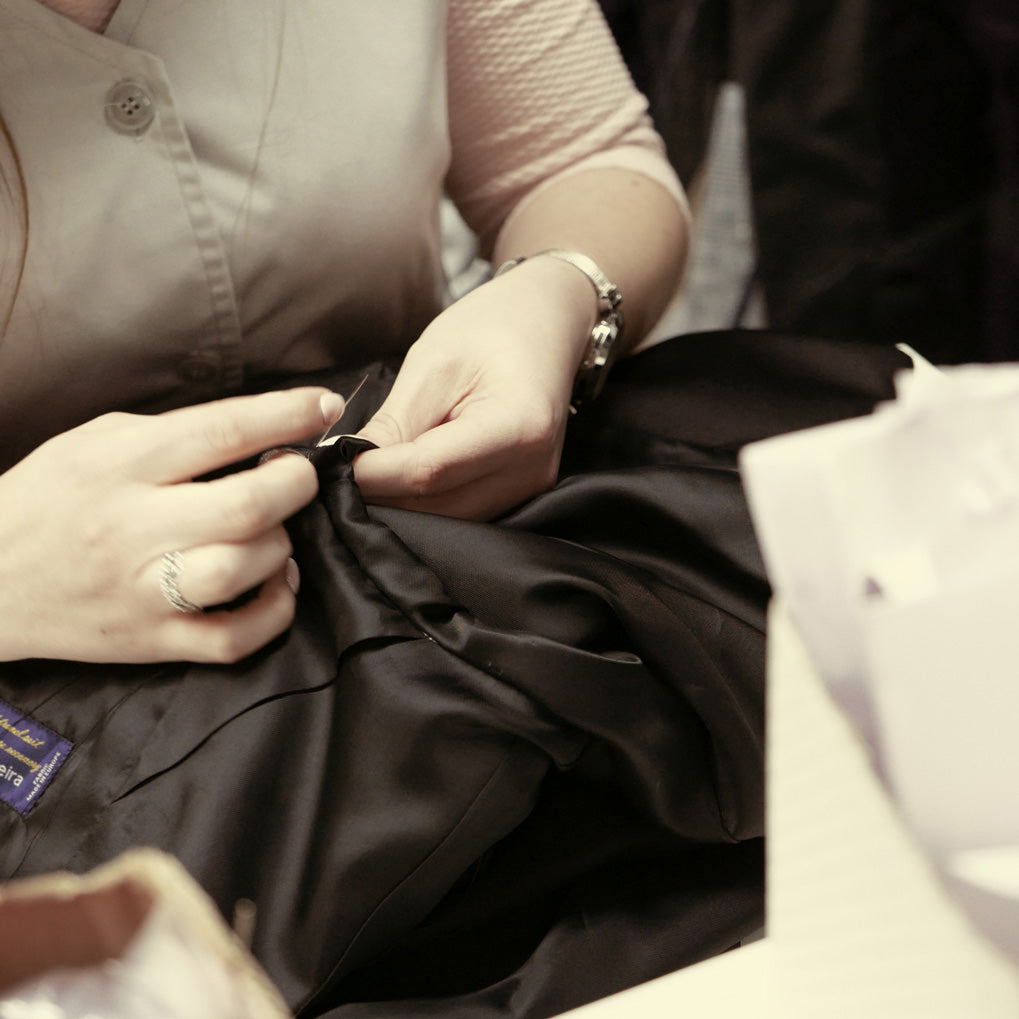

As you can see, our trips to Portugal tend to be non-stop, but it an indispensable part of what we do. Ultimately, we choose to produce our clothing in Portugal because of the incredible level of quality, dedication to detail and craft, and abundance of small-scale, family operations to partner with. But, on top of that, we've been so glad to discover how wonderful the country of Portugal is as a place to visit, spend time, and explore.
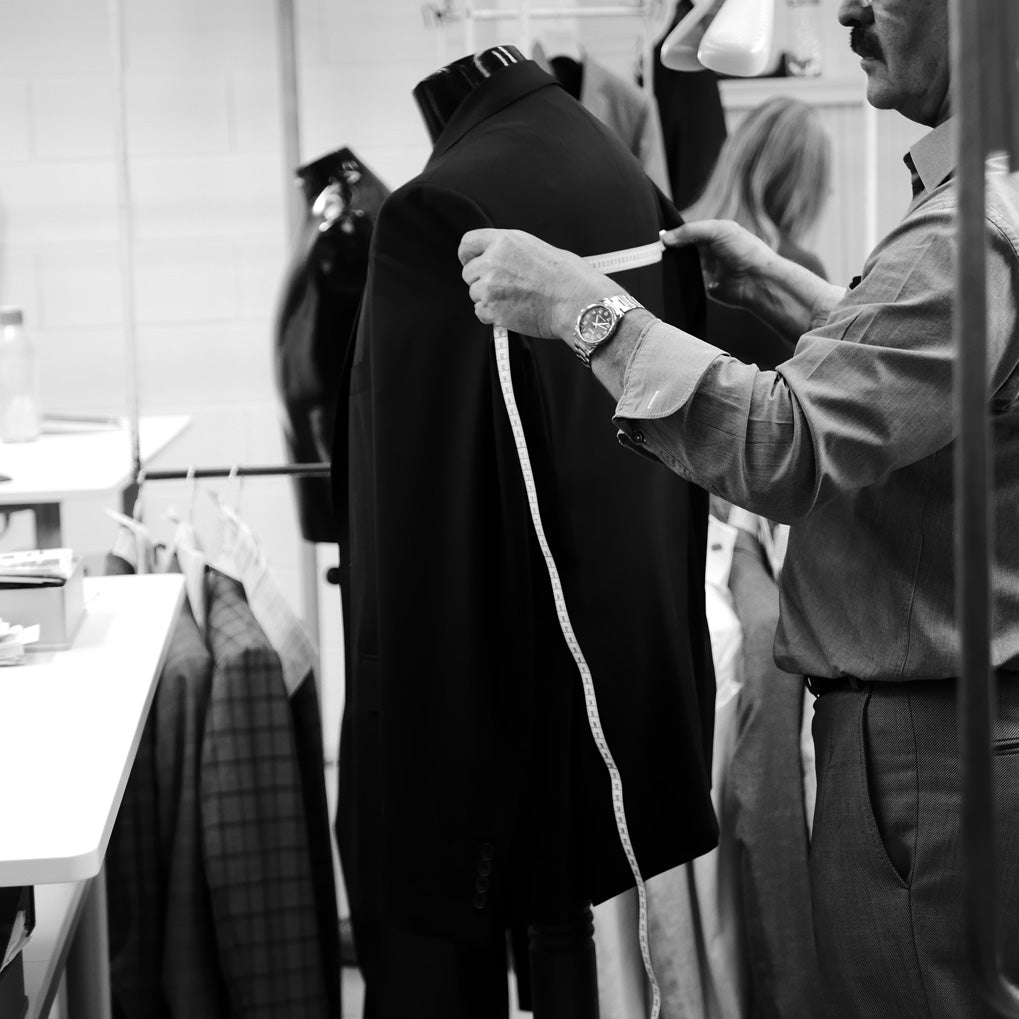 One final check of all the measurements, to make sure everything is perfect, before shipping the finished suit to us in Brooklyn.
One final check of all the measurements, to make sure everything is perfect, before shipping the finished suit to us in Brooklyn.

 Brenna here! About once a year, Daniel and I travel across the Atlantic and pay a visit to our tailors in Portugal. While we communicate constantly through phone, email, photos, and sketches, there's nothing like sitting down face-to-face with the talented and skilled tailors, patternmakers, and sewers that make Brooklyn Tailors' clothing come to life. Taking this chance to sit down with our Portuguese collaborators to talk shop, work on new designs, and just have a friendly visit is one of our favorite parts of the job.
Brenna here! About once a year, Daniel and I travel across the Atlantic and pay a visit to our tailors in Portugal. While we communicate constantly through phone, email, photos, and sketches, there's nothing like sitting down face-to-face with the talented and skilled tailors, patternmakers, and sewers that make Brooklyn Tailors' clothing come to life. Taking this chance to sit down with our Portuguese collaborators to talk shop, work on new designs, and just have a friendly visit is one of our favorite parts of the job.